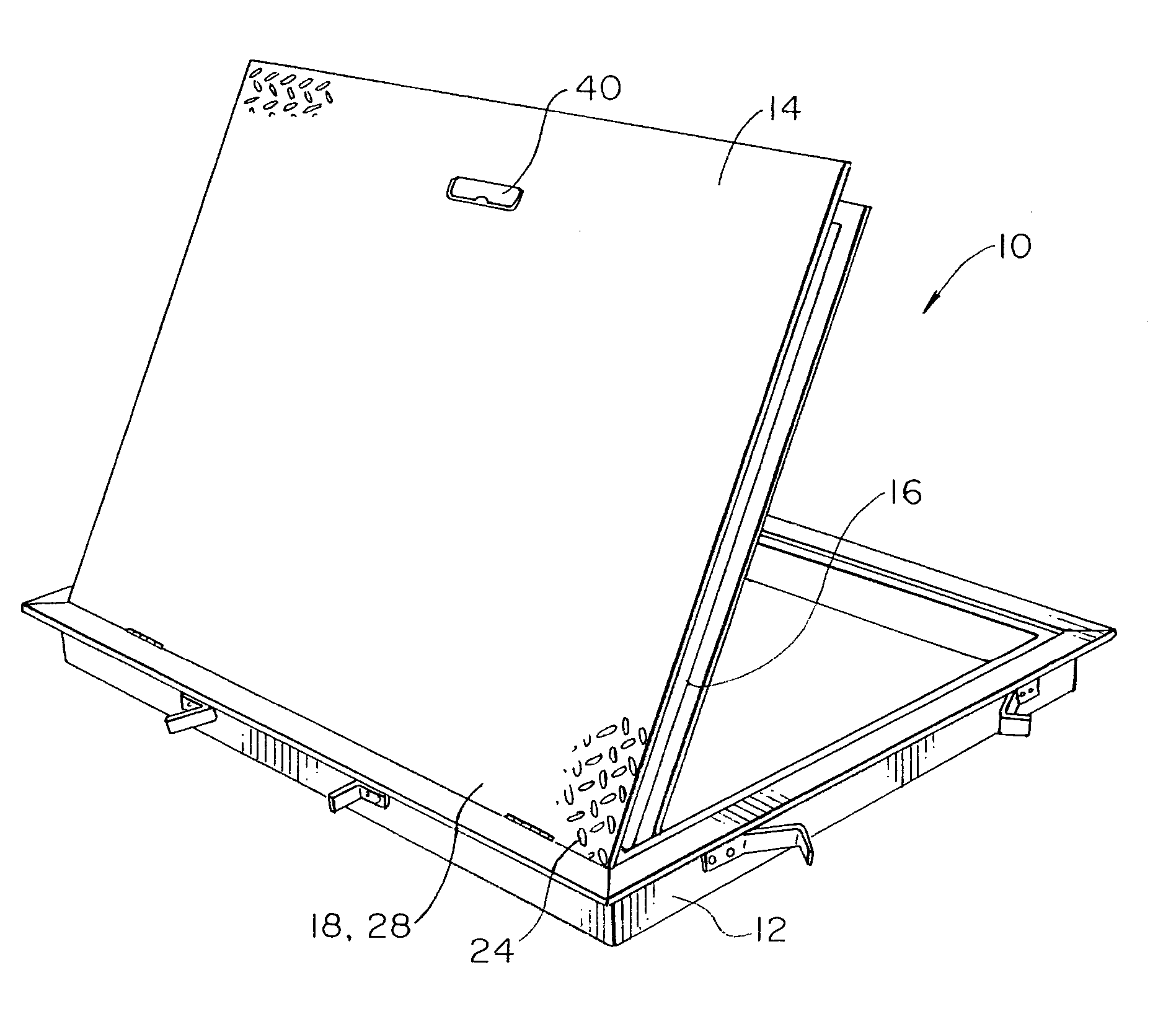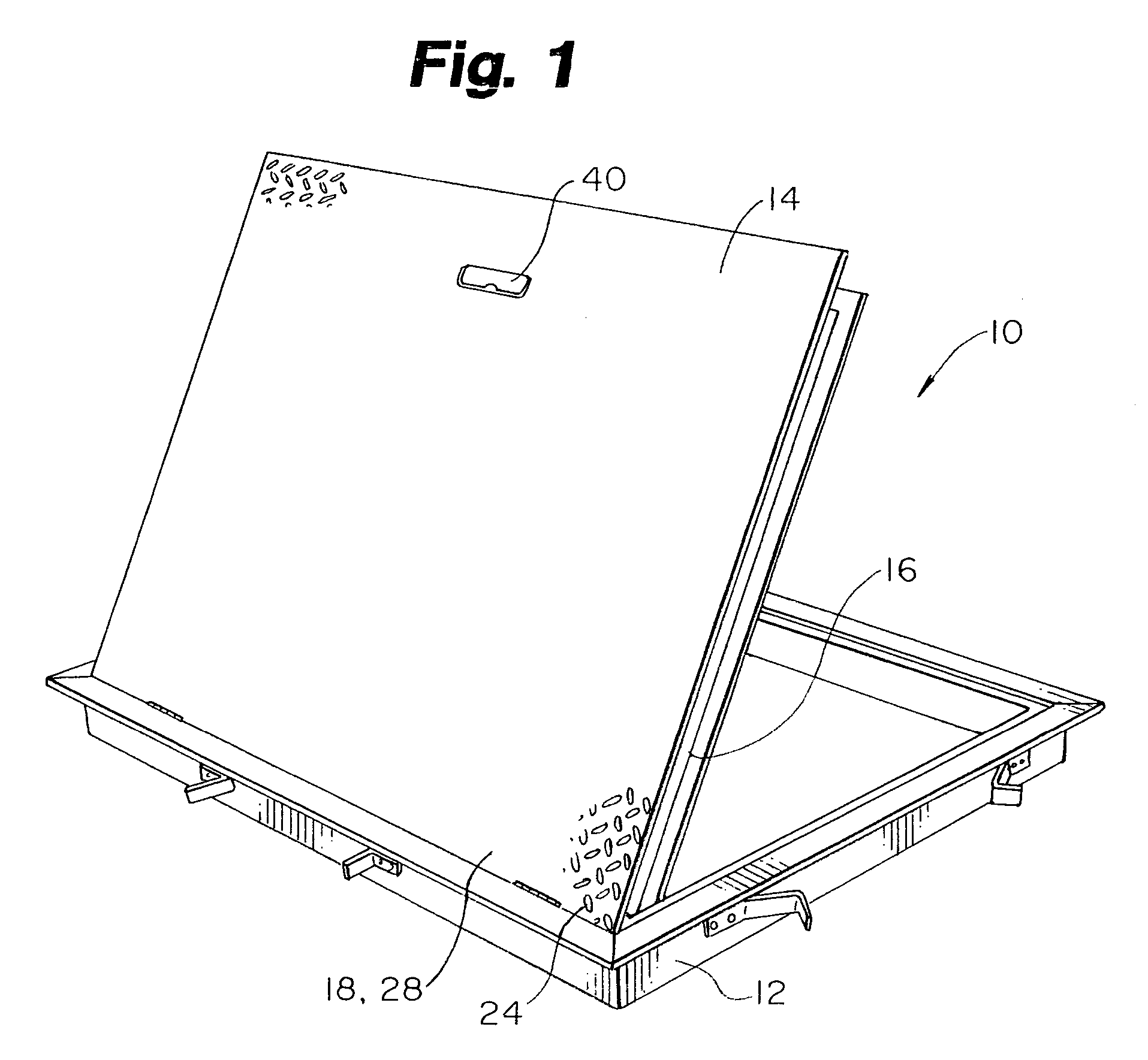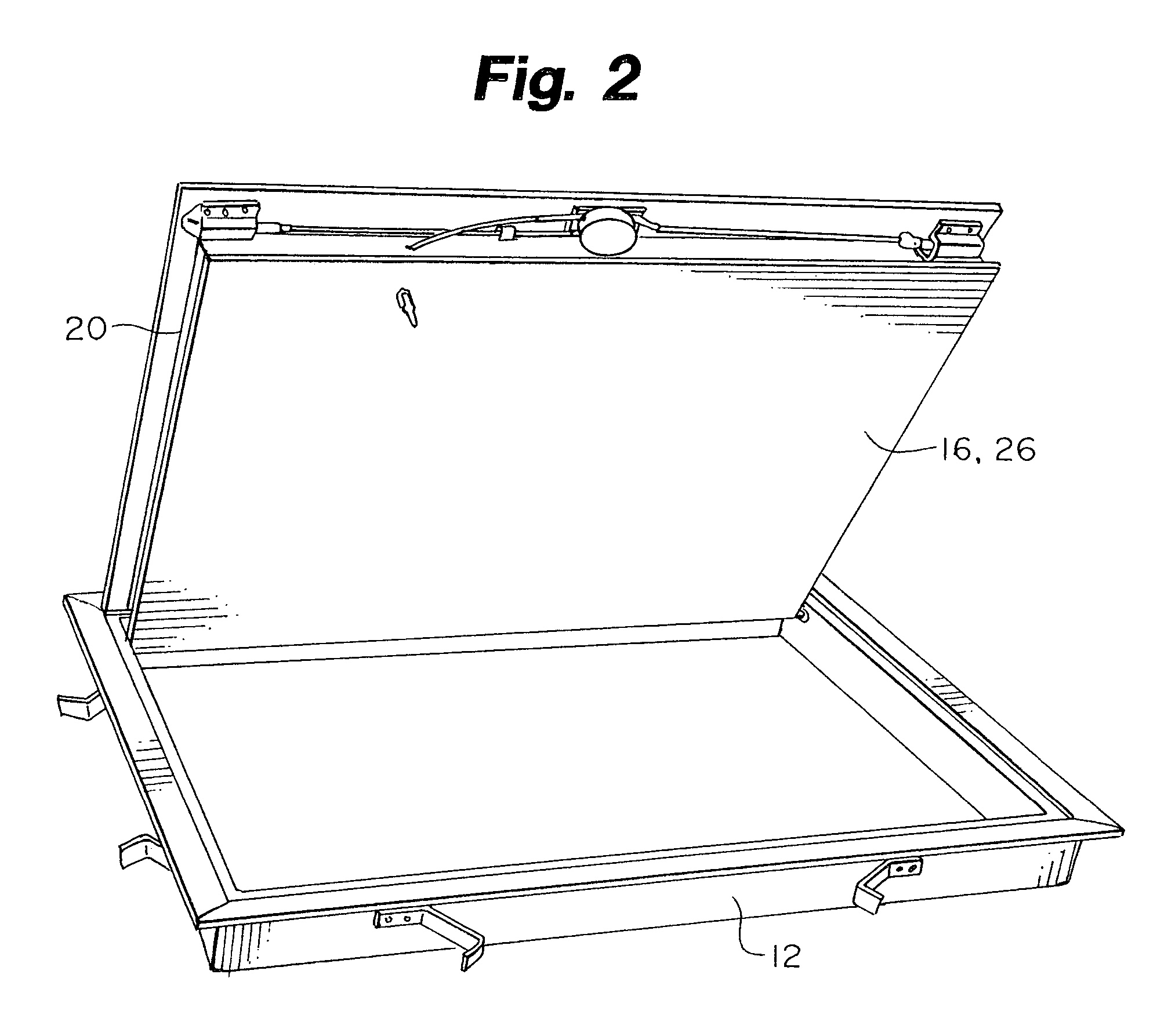Fire-resistant door
a door and laminate technology, applied in the direction of wing accessories, carpet fasteners, mechanical equipment, etc., can solve the problems of increasing the weight of the door, causing safety hazards, and not providing sufficient insulation properties
- Summary
- Abstract
- Description
- Claims
- Application Information
AI Technical Summary
Benefits of technology
Problems solved by technology
Method used
Image
Examples
Embodiment Construction
[0032]The fire-resistant door of the present invention is generally shown in the Figures as reference numeral 10.
[0033]The door 10 comprises a door frame 12, a door 14 hingedly mounted on the frame 12 the door having a bottom wall 16, top wall 18, and side walls 20.
[0034]The bottom wall 16, top wall 18, and side walls 20 enclose a hollow central core 22.
[0035]The door 14 is hingedly connected to the frame 12 by hinges 24.
[0036]The bottom wall 16 has an outside surface 26 and the top wall 18 has an outside surface 28.
[0037]A layer of intumescent material 30 is applied to the outside surface 26 of the bottom wall 16. The frame 12 also has a bottom wall 13 to which intumescent material 30 may be applied.
[0038]Preferably, the top wall 18, bottom wall 16, and side walls 20 comprise aluminum material.
[0039]The door frame 12 has a flange 32 adapted to engage the door when closed. A fiberglass gasket 34 is attached to the flange to provide an insulating seal between the door 14 and the flan...
PUM
 Login to View More
Login to View More Abstract
Description
Claims
Application Information
 Login to View More
Login to View More - R&D
- Intellectual Property
- Life Sciences
- Materials
- Tech Scout
- Unparalleled Data Quality
- Higher Quality Content
- 60% Fewer Hallucinations
Browse by: Latest US Patents, China's latest patents, Technical Efficacy Thesaurus, Application Domain, Technology Topic, Popular Technical Reports.
© 2025 PatSnap. All rights reserved.Legal|Privacy policy|Modern Slavery Act Transparency Statement|Sitemap|About US| Contact US: help@patsnap.com



